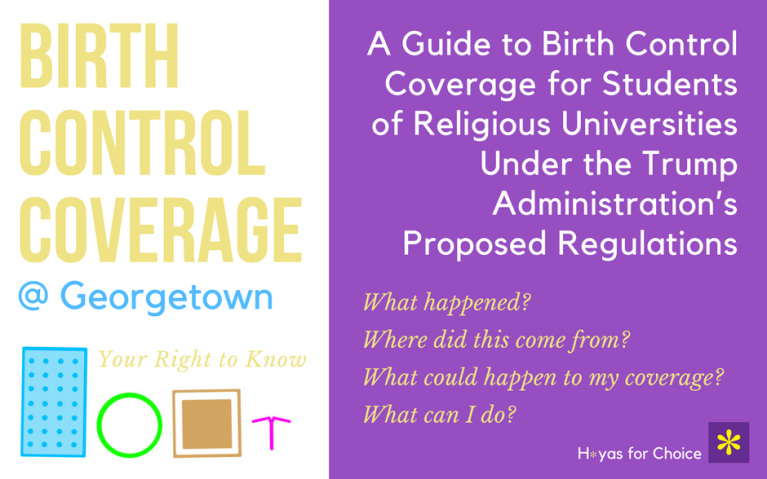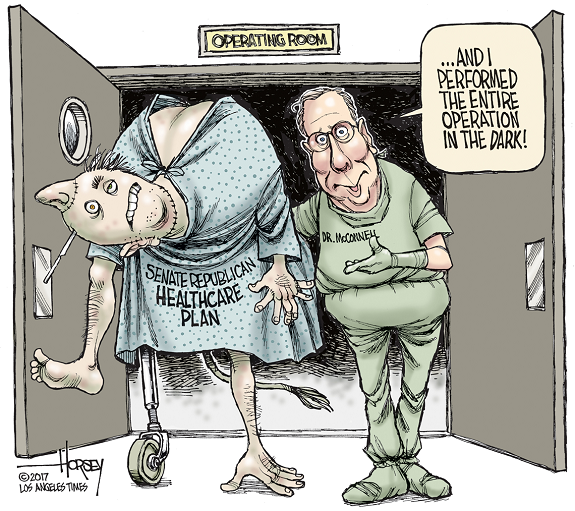If you are currently enrolled, or plan to enroll, in a student health insurance plan through a religiously affiliated university, changes proposed this week by the Trump Administration may affect your coverage.
What happened?
On this past Monday, May 23rd, the Trump administration drafted a regulation seeking to repeal the birth control mandate included in the previous administration’s Affordable Care Act (ACA). The proposed changes would effectively allow any employer to remove birth control coverage from its health care plans on religious or moral grounds. Under the rule, a university may be considered an “employer,” meaning that if it goes into effect, student health care plans may see contraception removed as a covered benefit.
Where did this come from?
Health care coverage for contraception has been an ongoing debate, especially in recent years under the Obama administration. Here are the key political changes that led us to the current state of birth control coverage:
- In 2010, the Obama administration passed the Patient Protection and Affordable Care Act (Affordable Care Act, ACA, or Obamacare). Among other provisions, the ACA requires health care plans to cover birth control in addition to seven other “women’s preventative health benefits.”
- As a response to the birth control mandate, a number of religious institutions – including hospitals and universities – began to push back politically. Initially, the only employers exempt from the birth control mandate were places of worship. Some religiously-affiliated hospitals and universities were also granted an exceptional status.
- In 2014, the Supreme Court decided Burwell v. Hobby Lobby, which expanded the permitted exceptions to the birth control mandate to include “closely held” private businesses with opposing religious or moral convictions.
- The regulation proposed this week seeks to repeal the Obama administration’s birth control mandate entirely, allowing any employer to deny birth control coverage in its health care plans, regardless of the type, size, or nature of the institution.
What could happen to my coverage?
At Georgetown, approximately 20% of all undergraduate students and approximately 30% of all graduate students are enrolled on the student health insurance plan and could have their care affected. The Trump administration’s proposed changes would be removing the existing restrictions on the denial of birth control coverage, including for universities’ student health care plans. Because Georgetown is a religiously-affiliated institution, it is possible that forms of contraception currently covered by student health insurance could cease to be included.
If a change is put in into effect before the beginning of the new coverage year, Georgetown will be required under the law to notify student plan-holders of any changes to their health care coverage, and to make clear in related documents that contraception is not a covered benefit. However, if birth control coverage is removed at the beginning of the coverage year, plan holders will likely not be notified; rather, the details will be written into the plan without an explicit notice of the change.
At a GUSA Roundtable on March 22, 2017, Vice President for Student Affairs Todd Olson assured attendees that students would have some role in the deciding the future of the policy in the event of an appeal, but indicated that the ultimate decision would reside in the highest levels of the University’s administration. H*yas for Choice continues to monitor the situation both on campus and nationally, and we will not let any rollback in coverage go unopposed.
What can I do?
In order to give Georgetown the message that students rely on their health insurance for birth control coverage, H*yas for Choice is collecting data. If you have used or plan to use student health insurance for birth control, please help us present this information by filling out our short, five-minute survey.
H*yas for Choice remains committed to following this issue and providing accurate, timely updates to students on their coverage and any changes that occur. If you would like more information on this issue, you can read about it here or get in contact with H*yas for Choice through our Facebook page, website, or email (hfchoiceboard@gmail.com).





